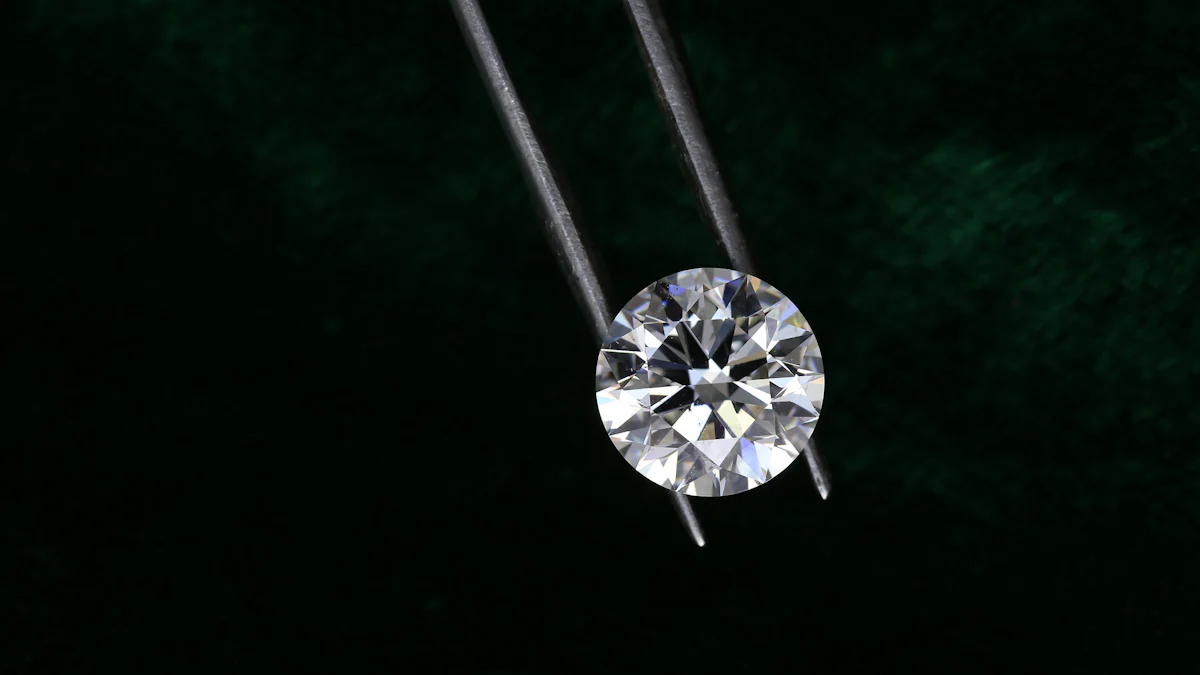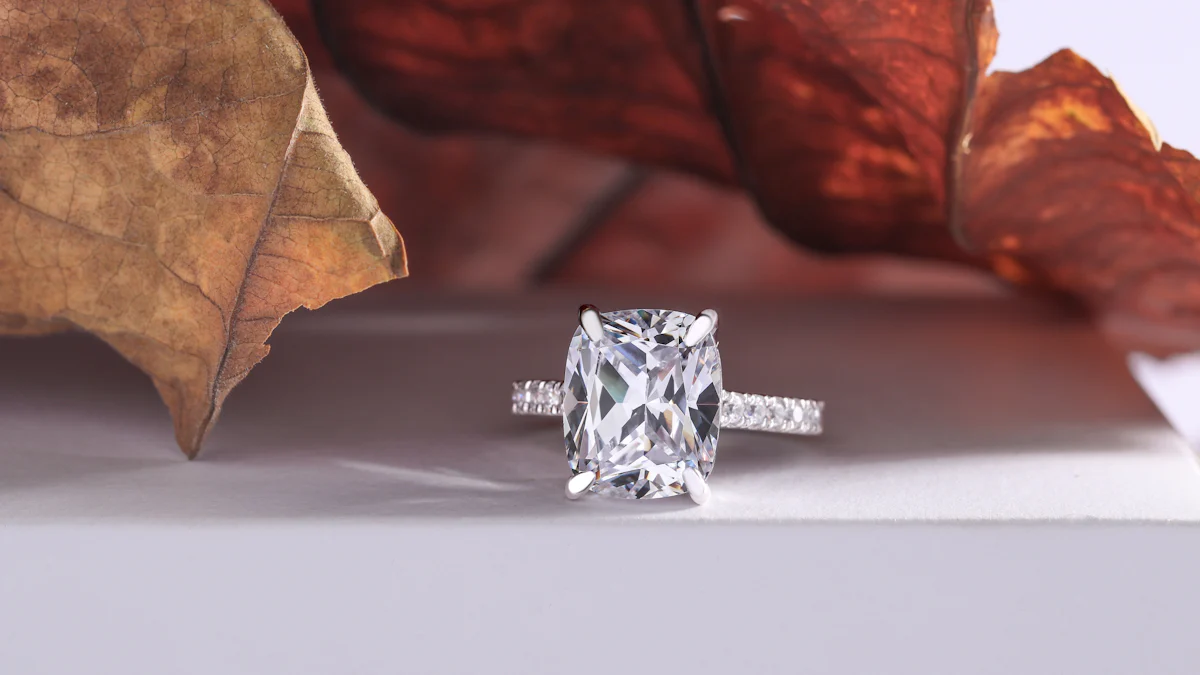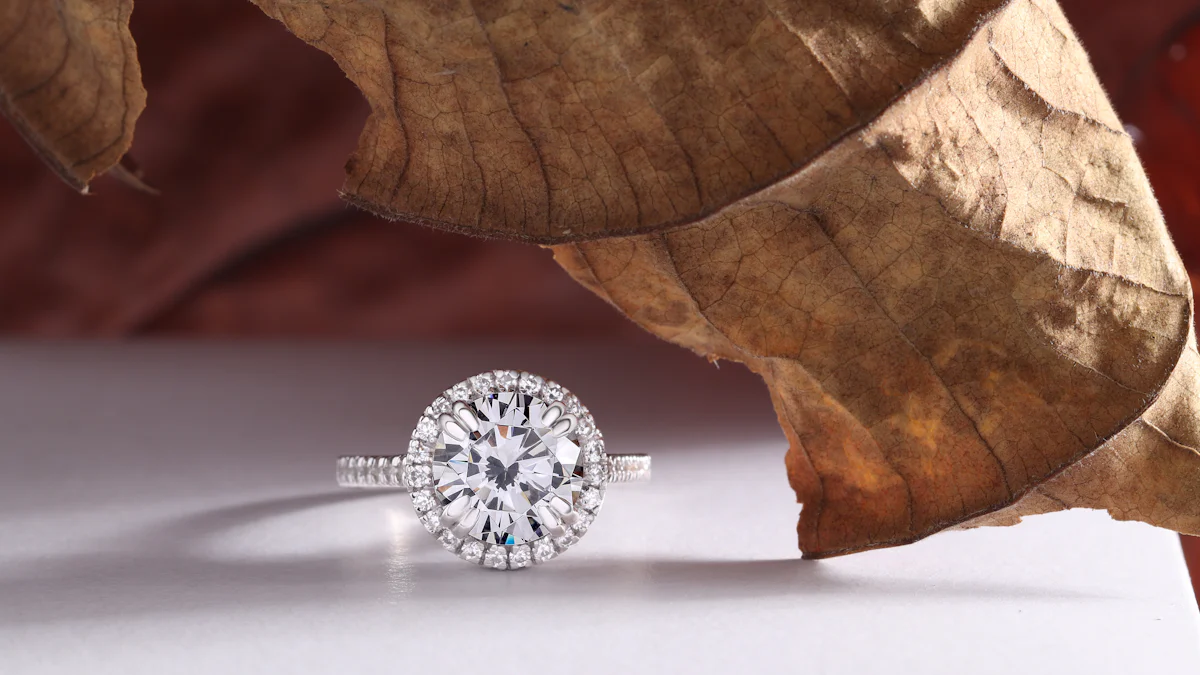What to Know About 1 Carat Diamond Certifications

When you're shopping for 1 carat engagement rings, a diamond certification is your best friend. It’s like a report card for the diamond, proving its quality and authenticity. Without it, you’re taking a big risk. An uncertified diamond might look great, but how can you be sure it’s worth the price? Certifications give you peace of mind by confirming the diamond’s cut, color, clarity, and carat weight. Plus, they make it easier to compare options and ensure you’re getting exactly what you’re paying for. Why settle for uncertainty when you can choose certified quality?
Understanding Diamond Certification

What Is a Diamond Certification?
A diamond certification is like a passport for your diamond. It’s an official document from a gemological laboratory that details the diamond’s characteristics, such as its cut, color, clarity, and carat weight. Think of it as a grading report that confirms the diamond’s quality and authenticity. Certified diamonds give you confidence because you know exactly what you’re buying.
However, not all certifications are created equal. The diamond certification industry isn’t strictly regulated, which means any company can claim to be a reputable lab. That’s why it’s crucial to stick with well-known certification bodies like GIA or AGS. These labs follow strict standards to ensure accurate and reliable diamond grading. When you buy a certified diamond, you’re not just getting a gemstone—you’re getting peace of mind.
Key Components of a Certification
The 4Cs: Cut, Color, Clarity, and Carat Weight
The 4Cs are the foundation of every diamond certification. They include:
- Cut: This determines how well the diamond reflects light. A well-cut diamond sparkles brilliantly.
- Color: Diamonds are graded on a scale from colorless to light yellow. The less color, the higher the grade.
- Clarity: This measures the presence of internal or external flaws, known as inclusions and blemishes.
- Carat Weight: This refers to the diamond’s size. A 1 carat diamond is a popular choice for engagement rings.
These factors work together to influence the diamond’s overall appearance and value. Understanding the 4Cs helps you make informed decisions when comparing diamonds.
Additional Details: Proportions, Polish, and Symmetry
Beyond the 4Cs, certifications also include details about the diamond’s proportions, polish, and symmetry. These elements affect how the diamond interacts with light and contribute to its overall beauty. For example, a diamond with excellent symmetry will reflect light evenly, enhancing its brilliance.
Unique Identifiers: Laser Inscriptions and Serial Numbers
Certified diamonds often come with unique identifiers, such as laser inscriptions or serial numbers. These markings are tiny and usually invisible to the naked eye, but they’re essential for verifying the diamond’s authenticity. They also make it easier to match the diamond to its certification.
How Certifications Are Issued
The diamond certification process involves a thorough examination by trained gemologists. They weigh, measure, and analyze the diamond under specialized equipment. Labs like GIA and AGS follow strict protocols to ensure accurate results. The process may also include compliance with the Kimberley Process Certification Scheme, which ensures diamonds are conflict-free. Once the analysis is complete, the lab issues a detailed diamond grading report. This report serves as proof of the diamond’s quality and value, giving you confidence in your purchase.
Why Diamond Certifications Matter
Quality Assurance and Transparency
When you buy a diamond, you want to know exactly what you're getting. That's where diamond certification steps in. It acts as a guarantee, providing a detailed evaluation of the diamond's attributes like color, clarity, carat weight, and cut. This transparency ensures you’re not just relying on a seller’s word. Instead, you have a trusted, third-party report to back up the diamond’s quality.
Certified diamonds also give you confidence that your purchase is authentic. Certification often includes information about the diamond’s origin, so you can be sure it’s ethically sourced and conflict-free. Plus, the grading process is standardized, which means you can compare diamonds easily and make informed decisions. Without certification, you risk overpaying for a diamond that might not meet your expectations.
Impact on Resale Value
Thinking about the future? A certified diamond holds its value better than an uncertified one. If you ever decide to sell or upgrade your diamond, having a certificate makes the process much smoother. Buyers trust certified diamonds because the certification provides an unbiased evaluation of the diamond’s 4Cs and overall quality.
For example, a GIA-certified diamond is globally recognized, which can attract more potential buyers. The detailed grading report reduces uncertainty, making buyers more willing to pay a premium. In fact, certified diamonds often fetch higher resale prices compared to uncertified stones of similar quality. That little piece of paper can make a big difference when it’s time to resell.
Peace of Mind When Buying Certified Diamonds
Buying a diamond can feel overwhelming, but certification makes it easier. Knowing the diamond’s qualities, like its cut and clarity, helps you feel secure in your purchase. Certification guarantees the diamond’s authenticity, so you can shop with confidence instead of second-guessing your choice.
Certified diamonds also simplify decision-making. You can compare options based on verified characteristics rather than vague descriptions. This clarity ensures you’re getting the best value for your money. Plus, there’s something reassuring about knowing your diamond meets established standards. It’s not just a purchase—it’s peace of mind.
Comparing Certification Bodies for 1 Carat Engagement Rings

GIA Certification
When it comes to diamond certifications, GIA is the gold standard. The Gemological Institute of America (GIA) is a non-profit organization that created the first International Grading System, known as the 4Cs: Cut, Color, Clarity, and Carat. This system is now the benchmark for evaluating diamonds worldwide. GIA certification is highly respected because of its strict, objective grading standards. You can trust a GIA diamond grading report to provide an accurate and unbiased evaluation of your diamond.
GIA certified diamonds are recognized globally for their quality and authenticity. Whether you're buying or selling, a GIA grading certificate ensures transparency and trust. If you're shopping for 1 carat engagement rings, choosing a diamond with GIA certification gives you confidence that you're getting exactly what you're paying for.
AGS Certification
The American Gem Society (AGS) is another top-tier certification body. AGS certification is known for its focus on diamond cut quality. In fact, AGS developed a unique grading scale that uses numbers instead of letters, with 0 being the highest grade. This system makes it easy for you to understand how well a diamond is cut, which directly impacts its sparkle and brilliance.
AGS certified diamonds are highly regarded for their precision and consistency. Like GIA, AGS follows strict grading standards, ensuring you get a reliable evaluation. If you're looking for a diamond with exceptional cut quality, AGS certification is a great choice. It’s especially popular among buyers who prioritize brilliance in their 1 carat engagement rings.
IGI Certification
The International Gemological Institute (IGI) is a well-known certification body, but it’s not as highly regarded as GIA or AGS. IGI certified diamonds are often graded less strictly, which can lead to inconsistencies. For natural diamonds, GIA and AGS are considered more reliable and accurate. However, IGI is recognized for its expertise in grading lab-grown diamonds.
If you're considering IGI certified diamonds, keep in mind that their grading criteria can vary between labs in different countries. While IGI certification may be more affordable, it’s worth investing in GIA or AGS certified diamonds for better reliability and recognition. For natural diamonds, GIA and AGS remain the most trusted options.
Other Certification Bodies
When it comes to diamond certification, you might encounter names beyond GIA, AGS, or IGI. These lesser-known certification bodies also evaluate diamonds, but their standards can vary. Understanding their role helps you make informed decisions when shopping for 1 carat engagement rings.
One such organization is HRD Antwerp. Based in Belgium, HRD focuses on European markets. Their reports cover the 4Cs and include details like fluorescence and proportions. While HRD certification is respected in Europe, it’s not as widely recognized globally as GIA or AGS certification.
Another name you might see is EGL (European Gemological Laboratory). EGL offers certifications for both natural and lab-grown diamonds. However, their grading standards are often considered less strict. For example, an EGL-certified diamond might receive a higher clarity or color grade than it would from GIA. This can make EGL-certified diamonds appear more affordable, but you should approach them with caution.
There’s also GCAL (Gem Certification and Assurance Lab). GCAL stands out by offering a “zero-tolerance” grading policy. Their reports include a photo of the diamond and a lifetime guarantee of accuracy. GCAL certification is gaining popularity, especially among buyers who value transparency.
When considering diamonds certified by these bodies, always compare their reports to those from GIA or AGS. This ensures you’re getting a fair evaluation. Remember, not all certifications carry the same weight, so it’s crucial to do your homework before making a purchase.
Tip: If you’re unsure about a certification, ask the jeweler for details or consult an expert. It’s better to double-check than to regret your decision later.
How to Read and Verify a Diamond Certification
Interpreting the Information on a Certificate
Reading a diamond certification might feel overwhelming at first, but it’s easier than you think. Start by focusing on the basics—the 4Cs. Look for the carat weight, which tells you the size of the diamond. Check the color grade, ranging from D (completely colorless) to Z (light yellow or brown). Review the clarity grade to understand the presence of inclusions or blemishes. Finally, examine the cut grade, which determines how well the diamond reflects light. These details give you a clear picture of the diamond’s overall quality.
Don’t stop there. Pay attention to additional details like the girdle thickness, which affects durability, and any treatments the diamond has undergone. Treatments like laser drilling or fracture filling can impact the diamond’s value and care requirements. Also, check the certificate’s age. Diamonds can get chipped or damaged over time, so older certificates might not reflect the current condition. Use the certificate as a guide, but always trust your eyes too. If the diamond doesn’t appeal to you visually, it might not be the right choice.
Verifying a Diamond’s Authenticity
You don’t have to take the certificate at face value. Verifying its authenticity is simple. Most reputable labs, like GIA, offer online tools where you can enter the certificate number to confirm the details. You can also contact the issuing lab directly for verification. Look for security features on the certificate, such as holograms or watermarks, to ensure it’s genuine. These steps protect you from counterfeit certifications and give you confidence in your purchase.
Tips for Buyers of Certified Diamonds
When buying certified diamonds, preparation is key. Here are some practical tips to guide you:
- Understand the 4Cs on the certificate to evaluate the diamond’s quality.
- Verify the grading lab’s reputation. GIA and AGS are the most trusted names in diamond grading.
- Check for laser inscriptions on the diamond that match the certificate number.
- Compare certificates for similar diamonds to find the best value.
- Scrutinize the diamond plot on the certificate and match it with the actual stone.
By following these steps, you’ll feel confident in your purchase and ensure you’re getting a diamond that meets your expectations.
Myths About Diamond Certification
Myth: All Certifications Are the Same
Not all diamond certificates are created equal. You might think every certification offers the same level of trust and detail, but that’s far from true. Different certification bodies have their own standards and methods for assessing diamonds. For example, GIA is known for its strict and consistent grading, while other labs might be more lenient. This means the same diamond could receive different grades depending on the lab that issued the certificate.
Certifications also serve different purposes. Some focus on natural diamonds, while others specialize in lab-grown stones. Each certification teaches you something unique about the diamond’s quality and characteristics. The relevance of a diamond certificate can even vary depending on where you’re buying or selling. A GIA certificate, for instance, is recognized worldwide, making it a top choice for buyers and sellers alike. So, when you’re shopping, don’t assume all certifications are interchangeable. Always check which lab issued the certificate and what their reputation is.
Myth: Certification Guarantees a Perfect Diamond
A diamond certificate doesn’t mean the diamond is flawless. It’s easy to assume that a certified diamond must be perfect, but that’s not the case. Certification is simply an assessment of the diamond’s characteristics, like its cut, color, clarity, and carat weight. It doesn’t mean the diamond is free of imperfections or the best option for you.
Even a diamond with a high-grade certificate might have inclusions or slight color tints. These details are part of what makes each diamond unique. The certificate helps you understand these traits so you can decide if the diamond meets your expectations. Remember, certification is about transparency, not perfection. It’s there to give you a clear picture of the diamond’s quality, not to promise a flawless gem.
Myth: Certified Diamonds Are Always More Expensive
You might think certified diamonds cost more, but that’s not always true. While certification adds value, it doesn’t automatically make a diamond more expensive. In fact, uncertified diamonds can sometimes cost more because sellers might inflate their prices without providing proof of the diamond’s quality.
A diamond certificate ensures you’re paying a fair price based on the diamond’s actual characteristics. It protects you from overpaying for a stone that doesn’t match its description. Plus, certified diamonds often hold their value better over time, making them a smarter investment. So, while certification might seem like an added cost, it actually saves you money in the long run by ensuring you get what you pay for.
When buying 1 carat engagement rings, diamond certification is your best tool for making a smart choice. It guarantees the diamond’s quality and authenticity, giving you confidence in what you’re purchasing. Certified diamonds protect you from fake or misrepresented stones and simplify comparisons based on grading. Plus, certification ensures transparency, so you know exactly what you’re paying for.
Choosing certified diamonds isn’t just about peace of mind—it’s about long-term value. Certified stones hold their worth better, making them easier to resell or upgrade. Prioritize certification to make informed decisions and enjoy your diamond with confidence.
FAQ
What is the most trusted diamond certification for 1 carat diamonds?
The GIA (Gemological Institute of America) is the most trusted certification. It’s known for strict grading standards and global recognition. If you want a reliable evaluation of your diamond’s quality, GIA certification is the gold standard.
How can I verify a diamond certificate?
You can verify it online through the issuing lab’s website. Enter the certificate number to confirm the details. Look for security features like holograms or watermarks on the physical certificate to ensure it’s authentic.
Do certified diamonds cost more?
Not always! Certified diamonds often reflect their true value, while uncertified ones might be overpriced. Certification ensures you’re paying for the diamond’s actual quality, making it a smarter investment in the long run.
Can I trust all diamond certification labs?
No, not all labs are equal. Stick with reputable ones like GIA or AGS. Some labs, like EGL, may grade diamonds more leniently, which can lead to inconsistencies. Always research the lab before trusting its certification.
Why do some diamonds have laser inscriptions?
Laser inscriptions act as unique identifiers. They match the diamond to its certificate, ensuring authenticity. These tiny markings are invisible to the naked eye but help protect your investment and simplify verification.
💡 Tip: Always ask your jeweler to show you the laser inscription under magnification for added peace of mind.
See Also
Comprehensive Analysis of 5 Carat Lab Created Diamond Bracelet
Exploring Different Diamond Cuts for Wedding Rings
What’s the Price of a 2 Carat Lab Created Diamond?

